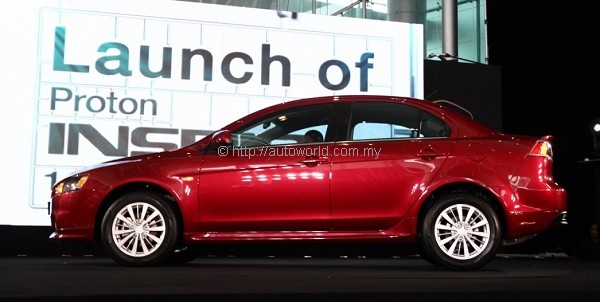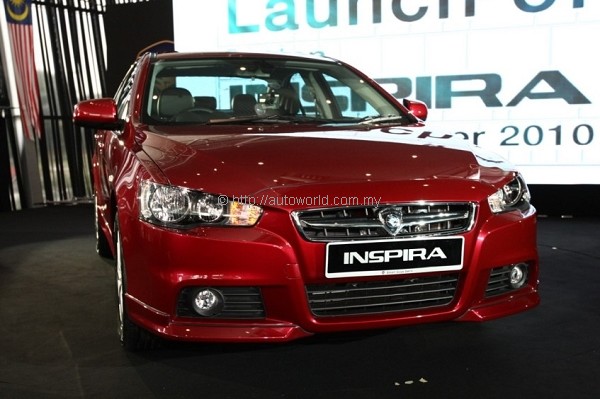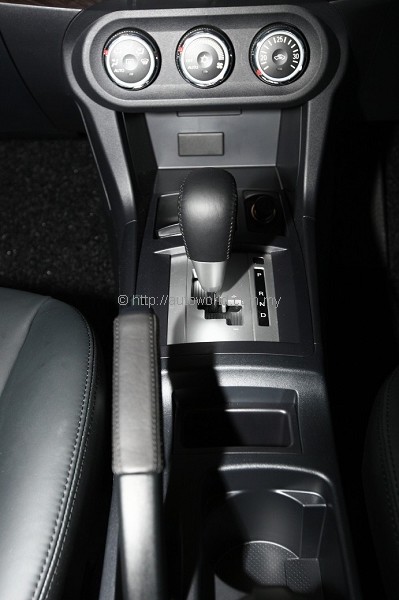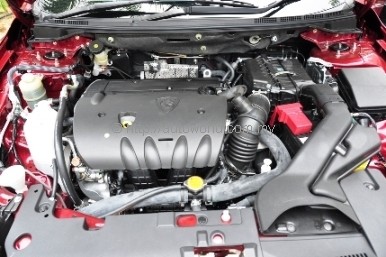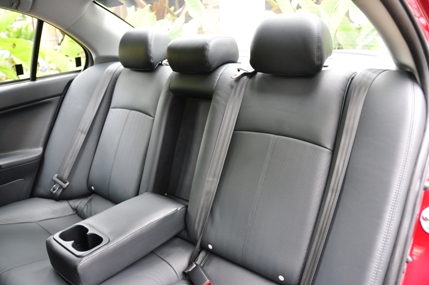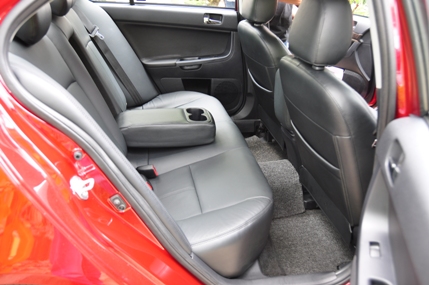Proton Inspira Driving Impressions
There has been much debate on whether Proton did it right or wrong in doing what they term as a ‘technological collaboration’ with Mitsubishi Motors Japan on the Proton Inspira. Whilst I do agree somewhat that after 25 years, Proton should be able to come up with its own design for a Wira replacement model, there are some other factors that must be considered.
Proton could have gone ahead and designed such a car – and a different set of negative comments would surface. Whilst I will not go onto speculation as to what they will be, there is no detracting from the fact that there is a group of Proton-bashers who will never have anything nice to say. What I would applaud is that Proton made a business decision to go the collaboration path – the reasons are manifold and plain to those who will just take some time to ponder why – there is untold savings in development costs and time costs, and also the Lancer is a proven product that requires little or no tweaking. Customer acceptance is also enhanced, with fewer questions to be asked on performance, reliability, and quality.
If you think that paying between RM79k and RM92k for what is essentially a Mitsubishi Lancer with slightly different looks and some changes to the ride and handling, then you should be so guided. Besides, whereas the Mitsubishi Lancer offers only one variant (with two slightly different body packages), the new Proton Inspira offers three different variants, from a 1.8 litre manual, to a 1.8 litre CVT, and a 2.0 litre CVT – which certainly caters to a wider spectrum of potential users than just one engine/transmission option. The price offering also expands the affordability downwards to a wider spectrum of buyers. The same people also invariably ask if the performance is any good – Well, I had the opportunity to do a pre-launch test drive on the Inspira, and this article is to share what I experienced.
The Proton people have an agreement with Mitsubishi not to touch the drive train and engine components of the car, so in respect of these items, there should be no difference in performance. You still get 150 PS of power with the 2.0 litre engine, and whatever performance figures that the Lancer gives. For the 1.8 litre, it is 140 PS, and performance with the CVT variant is slightly lower than that of the 2.0 litre job with the same CVT. The 1.8 litre manual, with its 5-speed gearbox never made it here in Mitsubishi guise, so there is no comparison to make. However, this variant of Mitsubishi Lancer is sold in Japan, and technically it is the same.
The 1.8 litre, by nature if it being manual, is fun to drive, and will appeal to those who like manual transmissions. The media that drove it were impressed by its responsiveness, and by the same vein, the short stint I did in it also was quite satisfying. Instead of waiting for the speed to climb up while the engine roars at a constant RPM, you actually get to feel the speed pick up in direct response to the engine revolutions building up – something people are used to. I have not been a real fan of CVT drive trains, and personally I do prefer the characteristics of the manual. What would be interesting would be a manual version of the 2.0 litre, although I do not envisage that this would ever become a reality.
According to Tengku Azizan, head of R& D in Proton, his team tested the standard Mitsubishi Lancer, and did not quite like the suspension, which he said was tuned more towards the ‘enthusiast’ driving style, and tended to over steer at high speeds, and there was too much body roll for his liking. Thus the team worked on the damper settings and the stabilizer bar settings. By increasing the size of the front and rear stabilizer bars, Tengku Azizan says they have managed to reduce the roll, and they have stiffened the damper settings to give a more stable ride. The overall result, he claims, is that the handling is much better, with the Inspira sitting flatter through bends, and with less yaw while going over undulating surfaces.
When I drove all the three models, I couldn’t really feel the difference, perhaps because it has been quite awhile since I drove a Mitsubishi Lancer. What is more pertinent is the fact that I did not feel insecure nor unsafe at any one time during our drive, a drive that went from Proton COE to Genting Sempah, and back to the COE via one of my favourite driving roads, the Ulu Yam – Batu Caves stretch. We had the cars all disguised with pieces of cardboard and black masking tape, which attracted quite a lot of attention, as we whizzed by the winding roads and sharp bends up and down the hills. My comment on the handling characteristics of the Proton Inspira would be that it is not worse off than the Lancer, and the two are so close to each other that I would be nit-picking if I wanted to look for any differences.
Inside, the quality of the materials is exactly the same as it appeared in the Lancer, except for the Proton badges where the Mitsubishi badges were. I have no complaints about the seats, and the interior instrumentation. They were all originally developed for the Lancer, and it is a simple case of transferring them all over to the Inspira.
In the final analysis, the Proton Inspira is almost a carbon copy of the Mitsubishi Lancer, save for the front bumper and mask. I have been told that the original Lancer front bumper (complete with the grille) is a straight fit onto the Inspira, so those who want the ‘Mitsubishi’ look should know what to do. In essence, what you are getting for a much reduced price is a product that has gone through thousands of hours of development, and has been time-tested all over the world, and cost much less than the imported version. If that is not enough, then what is?




